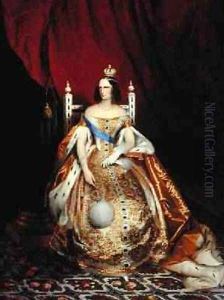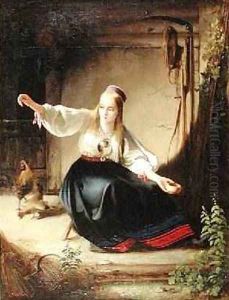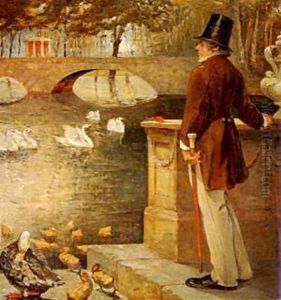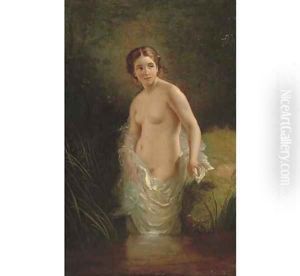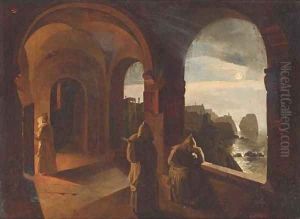Timoleon Carl von Neff Paintings
Timoleon Carl von Neff was a distinguished artist born on the 23rd of January, 1804, in Pärnu, which was then part of the Russian Empire (present-day Estonia). His artistic journey is marked by a significant contribution to the realms of painting, especially known for his portraits, religious compositions, and mythological scenes. Von Neff's work is celebrated for its meticulous detail, vibrant expression, and the classical grace that characterizes much of his oeuvre.
Educated initially in Saint Petersburg, von Neff's talents were nurtured under the guidance of the Russian art scene's luminaries. He studied at the Imperial Academy of Arts in Saint Petersburg, where he honed his skills and developed a keen sense of artistic expression that would define his career. His education was further enriched by extensive travels across Europe, including stays in Italy and Germany, places where he absorbed the Renaissance and Baroque influences that would later permeate his work.
Von Neff's career took a significant turn when he became a court painter to the Russian nobility, including Emperor Nicholas I. This role not only elevated his status as an artist but also allowed him access to the highest echelons of society, where his portraits became highly sought after. His works from this period are noted for their elegance, capturing the essence of his subjects with a dignified realism that was both flattering and profound.
In addition to his portraits, von Neff was deeply engaged in creating religious art, contributing significantly to the decoration of several churches in Russia and the Baltics. His religious compositions are marked by a deep spiritual sensitivity and an ability to convey the sacred through art. One of his most notable works in this genre is the altar piece for the Cathedral of St. Alexander Nevsky in Tallinn, Estonia, showcasing his mastery in handling large-scale compositions.
Timoleon Carl von Neff's legacy is one of artistic excellence that bridged the classical and the modern. His works remain a testament to his skill, vision, and the cultural vibrancy of the 19th century. He passed away on December 5, 1877, in Saint Petersburg, leaving behind a body of work that continues to be admired for its beauty, technical proficiency, and emotional depth.
